Time to do a little bit of catchup in FNY. I go out with the camera all the time, so there’s no surprise that a lot of pictures are in the can for quite awhile before they are used; I did a 12-mile walk from Sunset Park to Maspeth on Thanksgiving Day 2017 and got about 300 photos that I haven’t yet shown in here. Today I’m going with a journey I made all the way back in August 2017 from Maspeth to Bushwick through Mount Olivet Cemetery, down Grove and Bleecker Streets in Ridgewood and then up Central Avenue, winding up at the Morgan Avenue L train station, whence I went into Manhattan and got the train from Penn Station back to Little Neck. You might think there would be a better mass transit option than that, but in NYC, most mass transit lines lead to Manhattan and you just have to deal. Even the L train will be knocked out for at least 15 months beginning in 2019!
It was a muggy day with limited sun, but I hadn’t gone out for awhile with the camera and it was calling to me.
GOOGLE MAP: MT. OLIVET to BUSHWICK
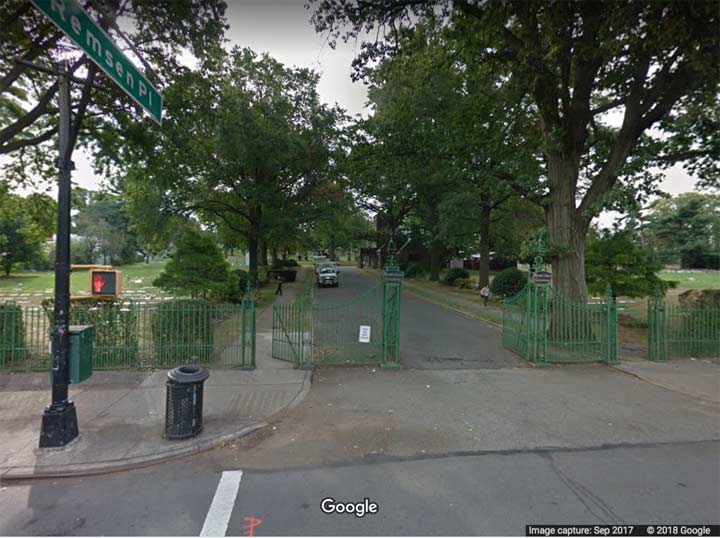
Mt. Olivet Cemetery, whose front gate at Grand Avenue and Remsen Place is shown here, was founded as an Episcopal cemetery in 1850 and opened to all faiths the following year. One of the founders, James Maurice, was a U.S. Congressman, Maspeth landholder and founder of the now disassembled St. Saviour’s Church. He is buried here along with his 2 brothers and 3 sisters, none of whom ever married. Compared to larger cemeteries around town like Green-Wood, Woodlawn and Evergreens, Mt. Olivet is a bit short on star power; however, Prince Matchabelli and Helena Rubenstein of cosmetics fame are buried here, as is gangster Jack “Legs” Diamond, who according to legend, was a good dancer, hence the nickname.
The cemetery, named for Jerusalem’s Mount of Olives where according to New Testament tradition, Jesus preached, was arrested at the Garden of Gethsemane and ascended into Heaven, occupies an irregular site stretching from Grand and 58th Avenues on the north to Eliot Avenue on the south, and from the rear of properties on 68th Street on the east to the rear of properties on 58th Road, 66th Street, 59th Avenue, 64th Street, 60th Avenue, 66th Street again, 60th Road, and, of course, Mount Olivet Crescent, on the west.
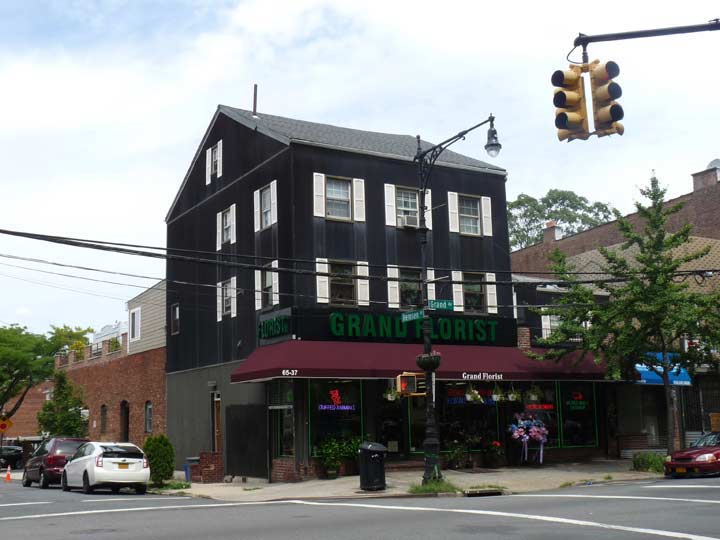
Before going in the cemetery, a note about the unassuming three-story building across from the entrance on Grand Avenue and Remsen Place. This is within the original Maspeth street plan (seen at the top of this atlas plate, which was drawn with south at the top). It was constructed as the Queens County Hotel in 1851, serving farmers from Long Island who were hauling wagonloads of produce to Brooklyn’s Wallabout Market. The hotel was one of many that sprang up on Grand Avenue, which was part of a network of farm to market routes that predated the present rough street grid that was established gradually from the 19th to 20th Centuries.
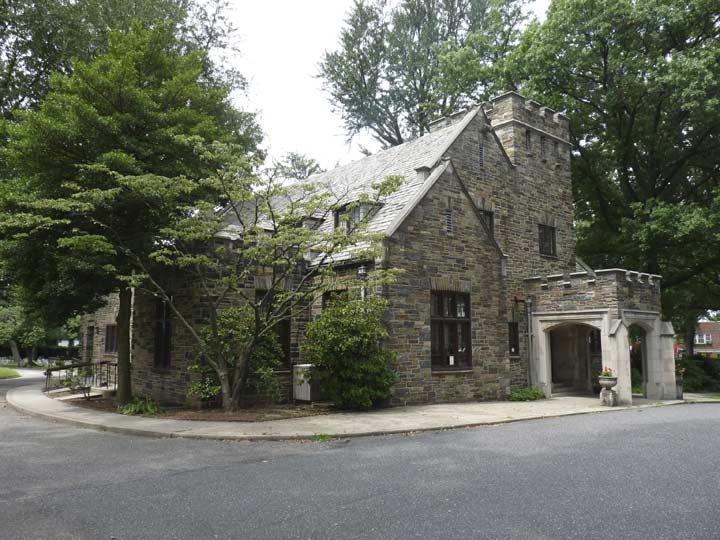
The gorgeous brick cemetery office at the head of the driveway from Grand Avenue is not the original. According to the cemetery’s website, it was constructed in 1936 and replaced the original office located further east on Brown Place.
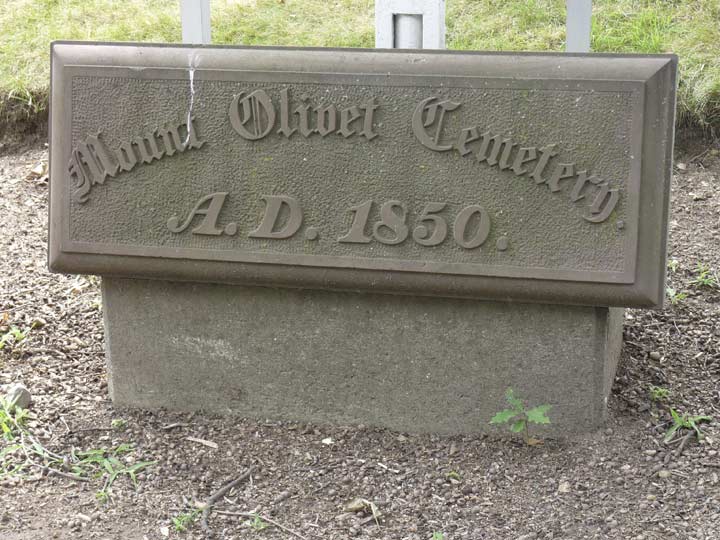
Mt. Olivet was built on a hill, so the NYC skyline, punctuated here by the Empire State Building and the tall sliver of 432 Park, is never out of consciousness. I enjoy walking through cemeteries for the silence and peacefulness; sometimes, I know I have to start thinking about which one I will wind up in. I would rather have control of the process, rather than leave it to family who may or may not even know me that well.
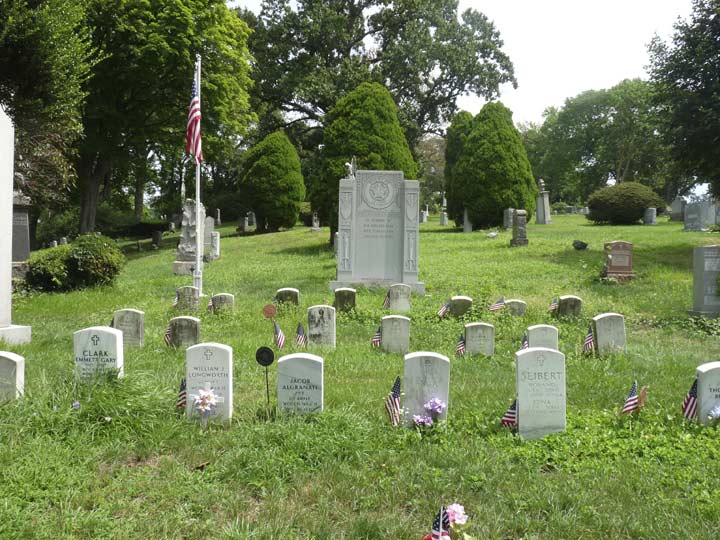
This American Legion grove honors war veterans. Some of the stones are newer, as the veterans’ families occasionally replace older weathered ones.
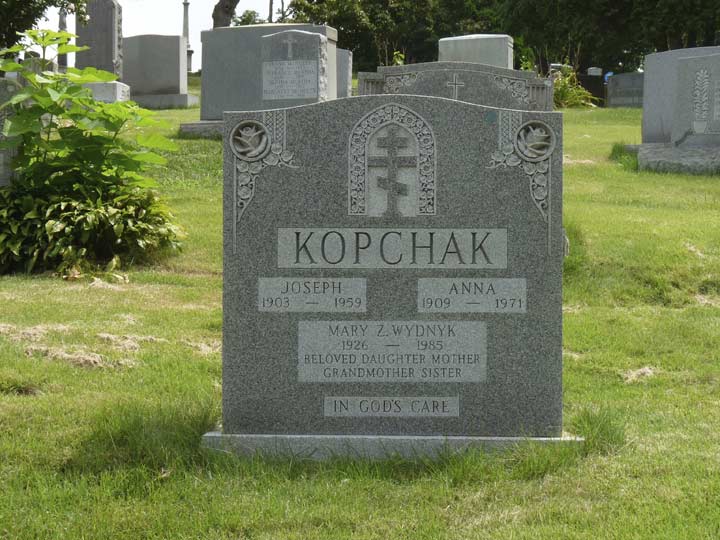
There are many burials in Mt. Olivet of people from, or were children of, immigrants from Eastern European countries such as Poland, Russia, the Czech Republic, Slovakia (earlier Czechoslovakia) and others. Many of these stones display the Russian Orthodox Cross.

Other monuments display the Jewish star. Remember, Mt. Olivet was opened up to all faiths pretty early on.
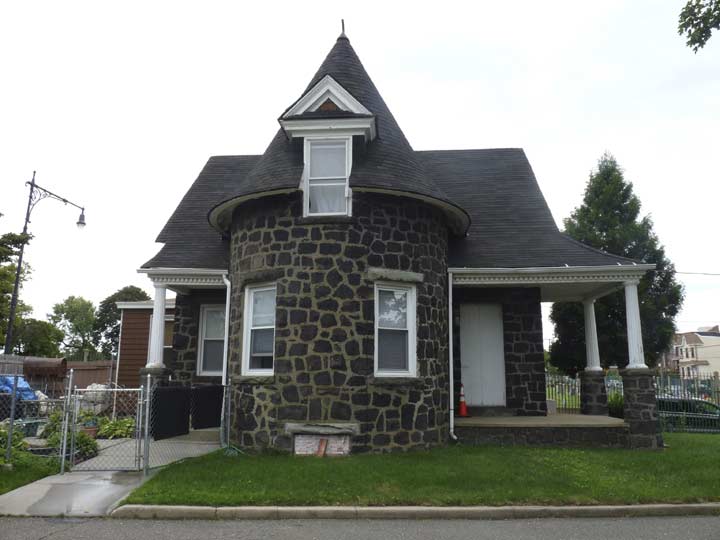
The cemetery also has a very impressive gatehouse at the southwest entrance at Eliot Avenue and Mount Olivet Crescent. It’s enough to make me want to be a cemetery employee so I could stay in the house. Its eclectic Queen Anne-style design includes ashlar brick, a dormer window in a turret and a front porch, all on a very small footprint.
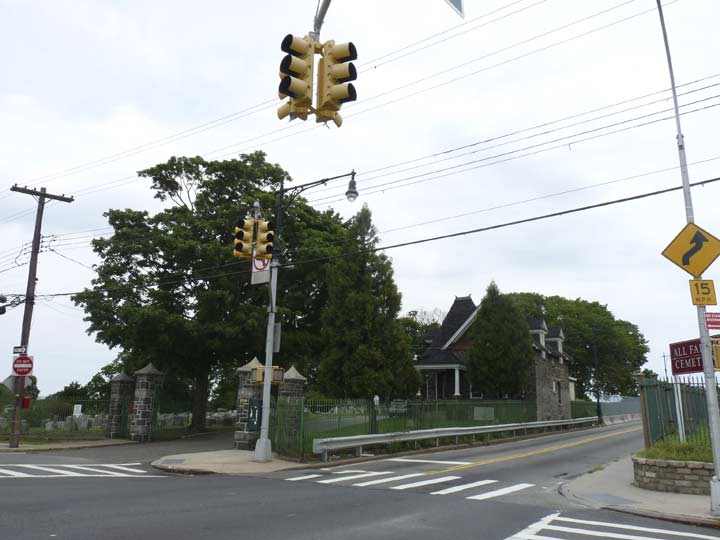
Eliot Avenue forms the barrier between Mount Olivet Cemetery on the north and Lutheran All-Faiths Cemetery on the south. As the Juniper Berry, the publication of the Juniper Park Civic Association explains, Eliot Avenue was extended east past Woodhaven Boulevard only in 1938-1939 as a means for Ridgewood and Middle Village residents to have a straightforward means to get near the 1939-1940 World’s Fair. At times, Eliot Avenue was called 61st Avenue, but the Department of Traffic eventually settled on honoring Walter G. Eliot, an engineer in the Queens Topographical Bureau in the 1910s when the avenue was first laid out. Eliot Avenue in its present widened form (except through Mt. Olivet, where it remains a 2-lane road) was completed in 1939.
However, that meant that the two cemeteries once faced each other without an avenue between them, as shown on this 1922 map. Presumably, there was a fence between the two properties…but maybe not! It would be hard to tell now.
Skipping ahead to Grove Street, whence I headed west from Fresh Pond Road, and a sampler of some of Ridgewood’s prime residential architecture. Many, but not all, of these buildings were built by developer Gustave X. Mathews employing yellow brick from the Balthazar Kreischer kilns in southern Staten Island, and those pockets of Ridgewood where these buildings have been identified have been granted protected status by the Landmarks Preservation Commission. Other sections of Ridgewood have clearly imitative designs, but are not landmarked and can presumably be torn down by developers who acquire the properties.
61st Street
Bunnecke Court
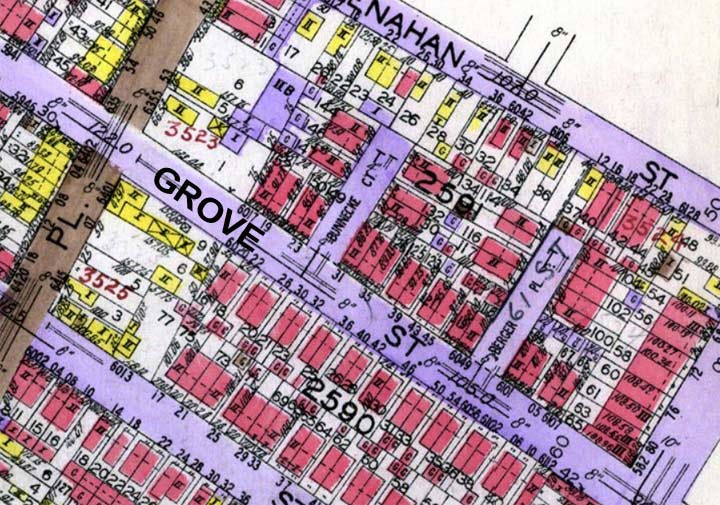
A pair of dead ends, 61st Street and Bunnecke Court, issue north from Grove Street west of Fresh Pond Road. I had thought them to be of fairly recent vintage, as Hagstrom did not deign to depict them until the 1980s (still somewhat recently) but as this 1929 map shows, they had been well-established by then, but Berger Place has mysteriously been renamed as part of 61st Street, while Bunnecke equally mysteriously kept its old name.
Note also that the Department of Transportation may have made an error on the street sign, where the “CT” has been crudely added. Mysteries abound in the NYC street naming scheme which are unlikely to be cleared up anytime soon, as the reasons have faded away and only geeks such as Forgotten NY care to mention them.
The brick row house is my favorite type of NYC residential architecture. Places like Baltimore have entire neighborhoods full of houses like these, but there, many have been allowed to go to waste and deteriorate in poverty-stricken areas. Here, they have been carefully maintained.
A second curious addition to the grid is St. John’s Road, running one block between Grove and Menahan, west of Fairview Avenue. There is no St. John’s Church nearby…
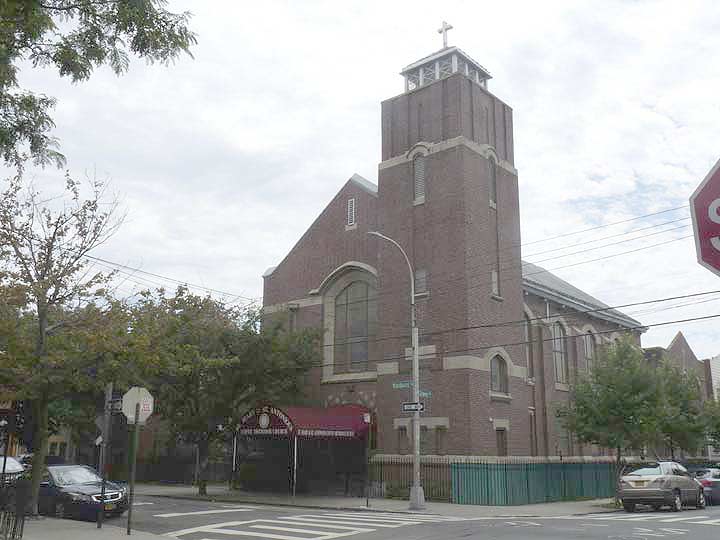
…one block away at Woodard and Grove, there is the St. Mary & St. Antonio(u)s (I find spellings with and without the “u”) Coptic Orthodox Church. The Copts are Egyptian Christians; Christianity was introduced to Egypt fairly early on, in the 1st Century AD. A few years ago, a ForgottenTour in Tottenville was warmly received by a Coptic parish — giving us a chance to get in out of the rain for awhile!

I have always been curious about this brick building on the NW corner of Woodward and Grove. It looks part residential, part institutional. It may be associated with the Coptic church.
A block away at Onderdonk and Grove is St. Mark’s United Church of Christ, which according to its cornerstone was dedicated in 1906. It’s hard to get a good shot of it because of the foliage. I’m not really religious, but I do a lot of church photography because churches are often the oldest and most architecturally interesting buildings in any given neighborhood.
According to tradition it was St. Mark, one of the Gospel composers, who brought Christianity to Egypt in the first century A.D.
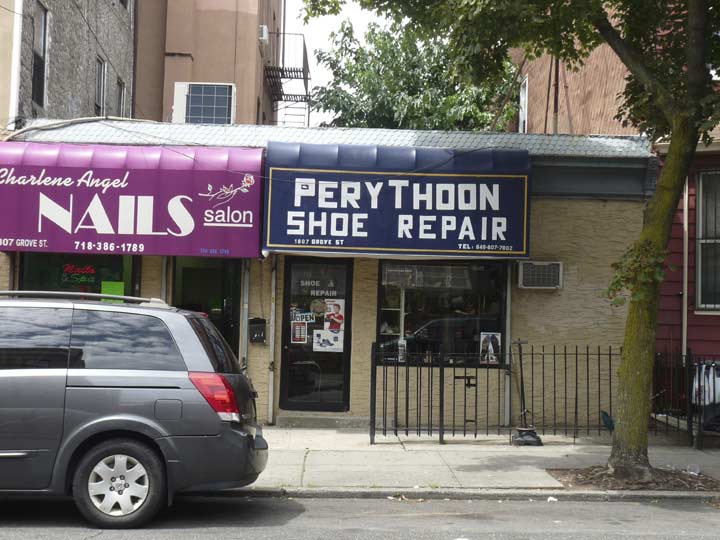
A curious name for a shoe repair shop on Grove just east of Seneca Avenue.
A residential sampler on Grove Street between Seneca and Cypress Avenues.
St. Brigid Roman Catholic Church is on the west side of St. Nicholas Avenue between Grove and Linden, putting it on the Kings County side of the undefended Brooklyn-Queens border. The parish was established in 1883 to serve Irish immigrant railroad men and their families who were working for the railroad line that evolved into the east end of the elevated train that runs through Ridgewood on its way to Metropolitan Avenue, today home to the frequently-service-interrupted M train.
The present church building, with its Corinthian columns and intricately sculpted images of saints and patriarchs, was dedicated in 1922.
The real find for me, though, was on the school building next door at St. Nicholas and Grove, constructed in 1909 (schools associated with Catholic churches are now called “Catholic academies”) on the light stanchions above the doors, where stenciled metal coverings in ecclesiastic-style type announce where the doors led! Some of the lightbulbs were turned on. The school principal once had a separate entrance!
Residential sampler, Grove between St. Nicholas and Wyckoff Avenues.

Grove just west of Wyckoff. Just about everything has been altered on this old dwelling, but its original wrought-iron gate is still intact.
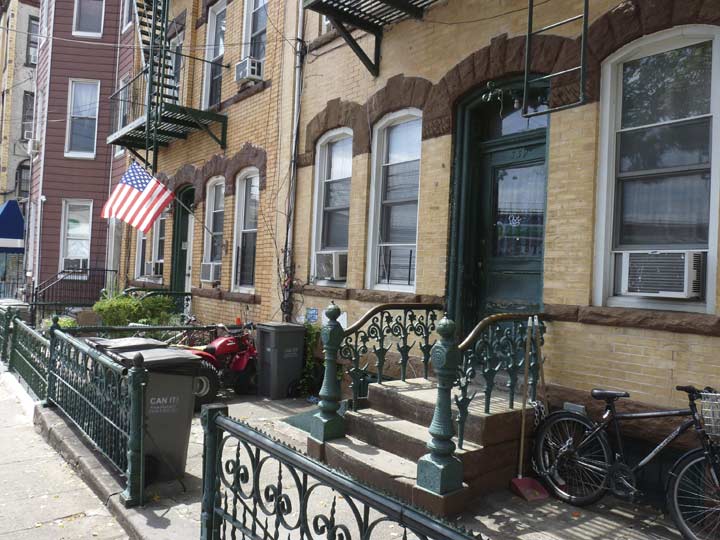
North side of Grove, which has a split personality on this block — the north side is dominated by these living-scale row houses, while the south side has a condo skyscraper, #358 Grove. I really dig those original gates, railings and gateposts.
House numbering is strange in this part of town. Grove Street begins at Broadway with numbering beginning at #1 (though there is no address with an actual #1) and gets into the 400s by the time it reaches the Queens border at St. Nicholas Avenue, whereupon it switches to #16-50 and house numbers go up from there. This was probably done to make the house numbers comparable to the longer Brooklyn Avenues that begin further west in Fort Greene, such as Gates, Greene, etc.
Myrtle Avenue, and its el, scythe through the differently-oriented Bushwick street grid. It was once a toll road when laid out in the 1850s from downtown Brooklyn to Jamaica and was one of the original routes in the area, with the elevated train arriving in the late 1800s replacing what was originally a steam railroad referenced earlier here. I was so fascinated with Myrtle Avenue, I walked it in its entirety. Here’s FNY’s page on its Bushwick stretch.
Note that the el pillar comes down smack in the middle of the roadway. This happens a lot along Myrtle Avenue because it runs athwart the oriented grid.

You may have noticed small gated plots of greenery around town. Known as bioswales, these gardens absorb polluted stormwater and prevent runoff that could seep into waterways through the sewer system. However, they also sometimes serve as garbage deposits.
Residential sampler, Grove between Myrtle and Knickerbocker
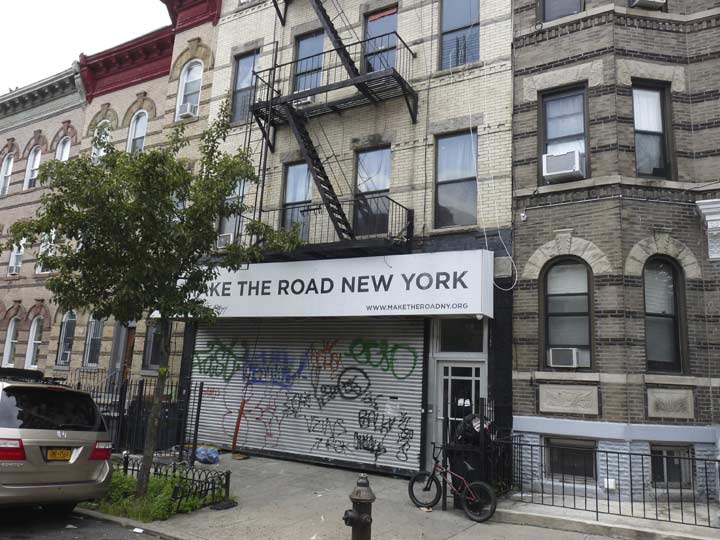
Make The Road New York is a community organization with Brooklyn, Queens and Staten Island branches that “promotes economic justice, equity and opportunity for all New Yorkers through community and electoral organizing, strategic policy advocacy, leadership development, youth and adult education, and high quality legal and support services.”
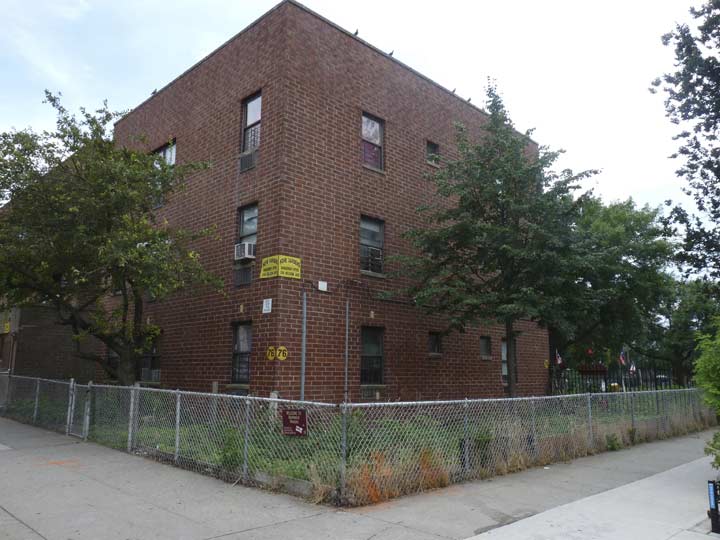
Hope Gardens and the Hope Ballfield fill two square blocks between Menahan and Linden Streets and Knickerbocker and Wilson Avenues. The houses were constructed in 1981 after a number of former tenement buildings had to be razed after the looting and fires during and after the 1977 blackout.
Though the neighborhood still has its share of woe, “hope” is the watchword. It’s difficult to imagine the scenes of destruction in Bushwick in the late 1970s and 1980s, with burnt-out and abandoned buildings littering the landscape. Much of this has now been alleviated, though drug dealing and crime may never completely go away.
“Bushwick’s Hope Is a Public Project” [NY Times, 1993]
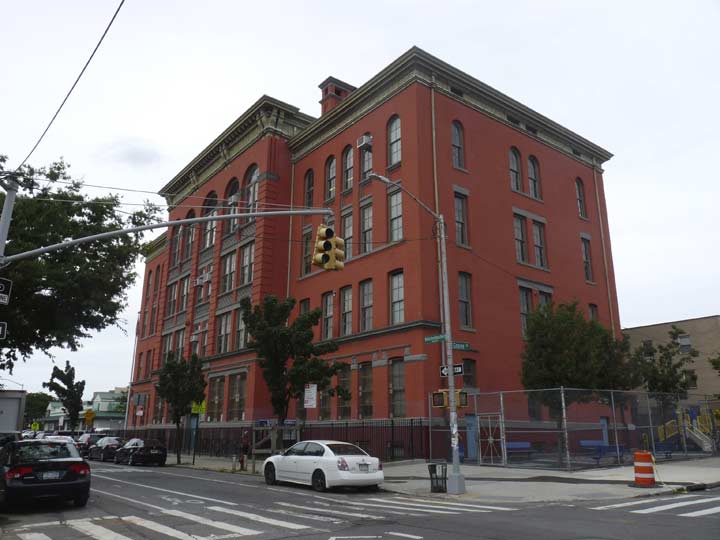
PS 116, in flaming red brick, is one of NYC’s handsomest public schools, on Knickerbocker Avenue between Menahan and Grove Streets. It is a brick and terra cotta Romanesque Revival building designed by James W. Naughton and opened in 1899, a year after his death. In 2002 it was named an official NYC Landmark.
[Read the NYC Landmarks Preservation Commission’s Report for PS 116]
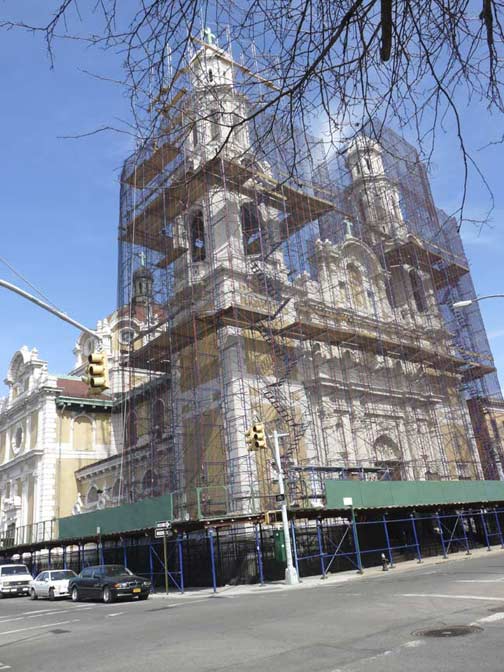
St. Barbara’s Roman Catholic Church at Bleecker Street and Central Avenue is likely the largest church in NYC after St. Patrick’s Cathedral and the Cathedral of St. John the Divine in Morningside Heights (there are other candidates like St. Agnes in the Gowanus area in Brooklyn, but fill me in if there are other contenders).
It is a gleaming white and cream twin-towered Spanish Baroque Catholic parish. It was constructed in 1910 by prolific architects Helmle and Huberty with a sizable donation by brewer Leonard Eppig — the church was named for his daughter Barbara. The parish has served a German, then Italian and now a Hispanic congregation.
It has been mostly hidden behind scaffolding since 2015, and I’m waiting for the day it’s once again visible!
Bleecker Street in Bushwick and Ridgewood is named for either Dutch immigrant Jan Jansen Bleecker (1641-1732) or his descendant, Anthony Bleecker, the Revolutionary-era shipping merchant. The more famous Greenwich Village Bleecker Street is named for Anthony. “Bleecker” is a Dutch name meaning “bleacher” as in, one who bleaches cloth. It’s misspelled “Bleeker” so often the “c” may as well be dropped.
From here, I took off northwest on Central Avenue since I had never walked it before. Its position in the Bushwick street grid between Broadway and the undefended Brooklyn-Queens border may have decided its name.
The Bushwick Houses, a public housing project first developed in 1956, are laid out between Wilson and Central Avenues along Greene Avenue and Harman and Himrod Streets.
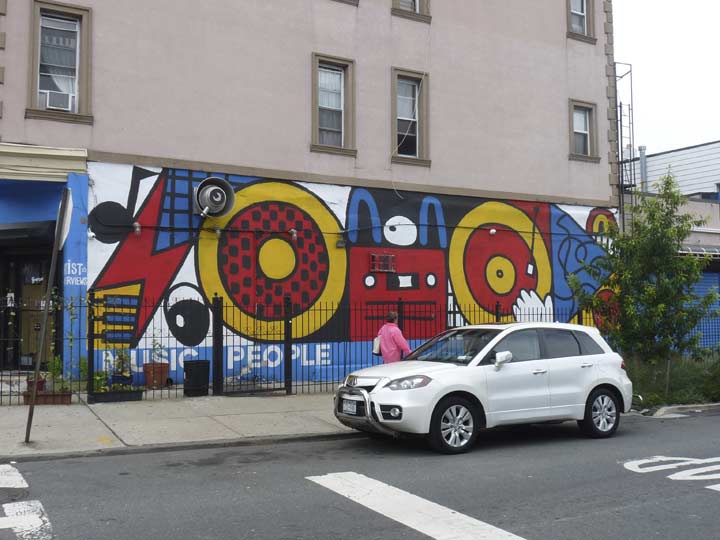
The deeper into Bushwick you penetrate, the more street art becomes part of the streetscape. This piece at Central Avenue and Stanhope was done by an South American artist, Sonni, in 2016. Besides public walls, his work has also been exhibited in galleries. The corner venue is FirstLive, a combination coffeehouse and sound service venue (similarly, the upscale pizza joint Roberta’s, further north, contains a radio studio where I was actually interviewed in 2011).
The lingua franca for a certain demographic is all coffee, all the time. The Bushwick Public House at Central and Myrtle offers “coffee, whiskey, culture.”
I may have expounded on this before, but I never got in the coffee habit. I have one cup a year, at a relative’s on one holiday or the other.
Myrtle, Central and DeKalb Avenues all meet, creating a multipronged intersection and a very small triangle plot occupied by a pizza/cheeseburger place.
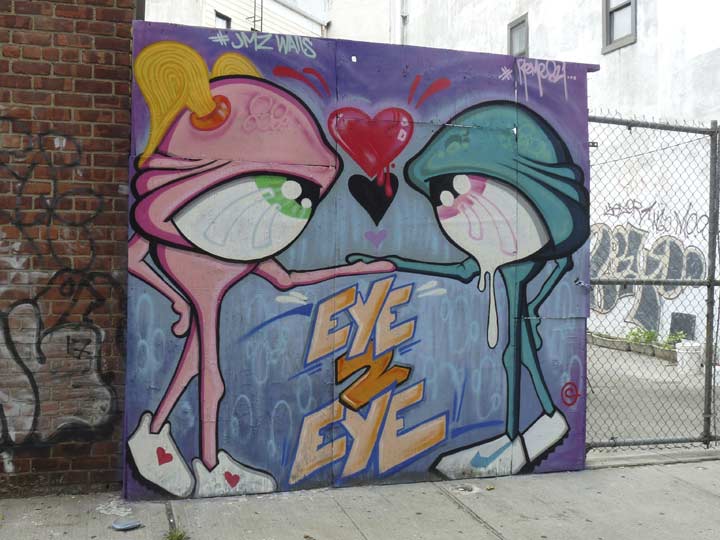
This piece on Myrtle Avenue reminds me of the work of Vaughn Bodé (1941-1975), who appeared in the National Lampoon and other venues in the 1970s.
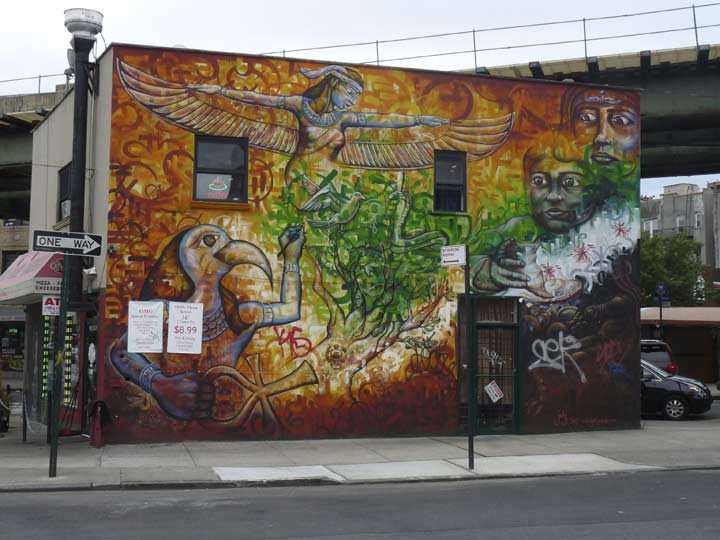
Egyptian-themed art on the Cedar Street-side of the triangle building. There are two short Cedar Streets in Brooklyn, one here in Bushwick and the other running for just a block between East 16th and 17th south of Avenue M in Midwood.
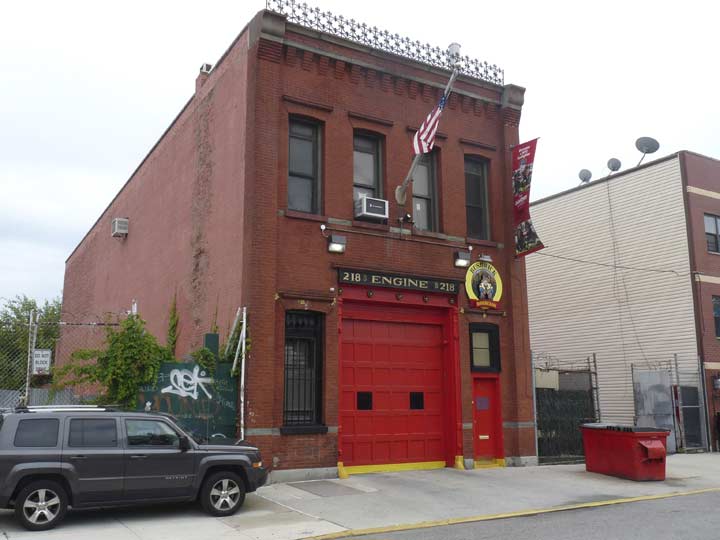
A venerable firehouse, Engine 218, perhaps dating to the Brooklyn Fire Department days, on Hart Street west of Central Avenue.
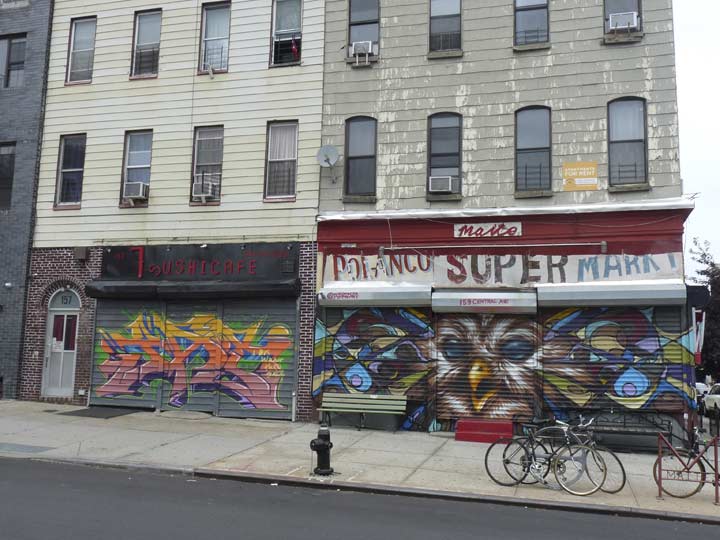
I can assure you that the Polanco Supermarket, with its hand-drawn sign, is out of business. Occupying the space these days at Suydam Street is a Colombian restaurant called Maite (Maite is a girls’ name of Basque origin meaning loved one and one who brings love, according to the restaurant’s website). It was not yet open on the Sunday afternoon I passed by.
Next door, the 7 Sushi Cafe‘s wood-lettered sign appears to be falling off but that seems to be the intended design.
Next door to the sushi joint is the cleverly named Rack Shack, which sells bras. I’ve never seen a bra store before, but then again, I have never sought one out.
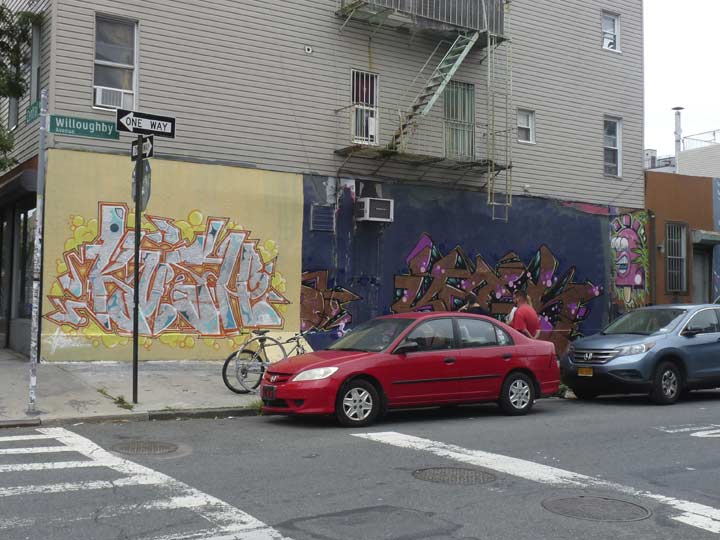
Some garden variety street art at Willoughby Avenue. This is a constantly changing canvas. Check out Street View through the years to check it out.
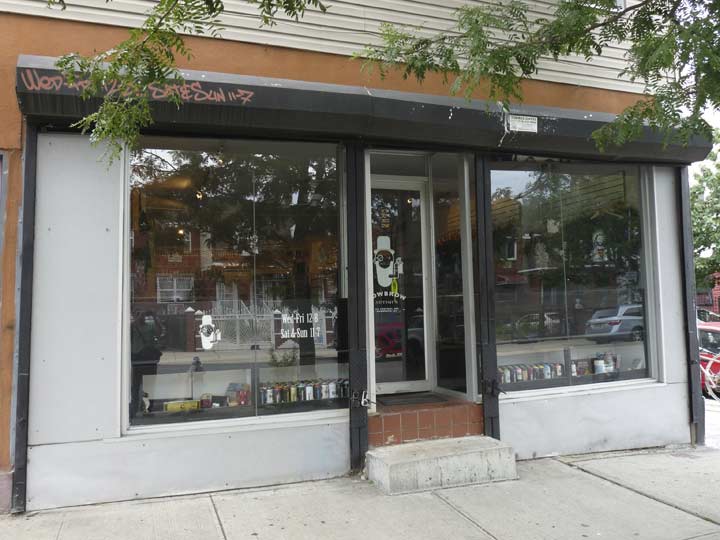
Speaking of street art, specialization is the theme in these parts. Lowbrow Artique, occupying the storefront around the corner on Willoughby, sells Montana spray paint and apparel with street art designs.
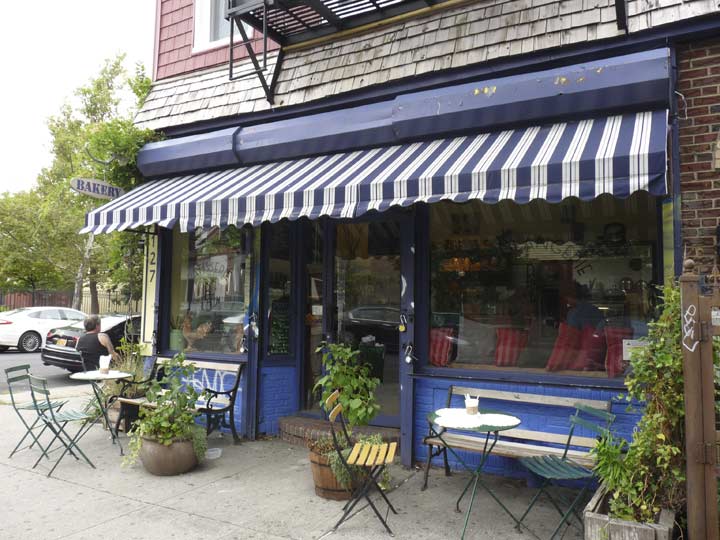
The Bushwick Bakery, at Starr Street, seems to be another new addition to the gentrifying area. Street View shows that the space used to be occupied by a bodega, Eric Foods Mini Market.
Bushwick Backery [sic] is the latest venture for the Smith Street pioneer. Getting back to his roots in French bread and pastry, while offering items that reflect the diversity of an ever-changing Bushwick such as empanadas and coconut crusted carrot cake. [Bushwick Bakery]
Yes, Bushwick Bakery misspells bakery on their own website, but these days, spelling everything correctly is the mark of the hated nerd.
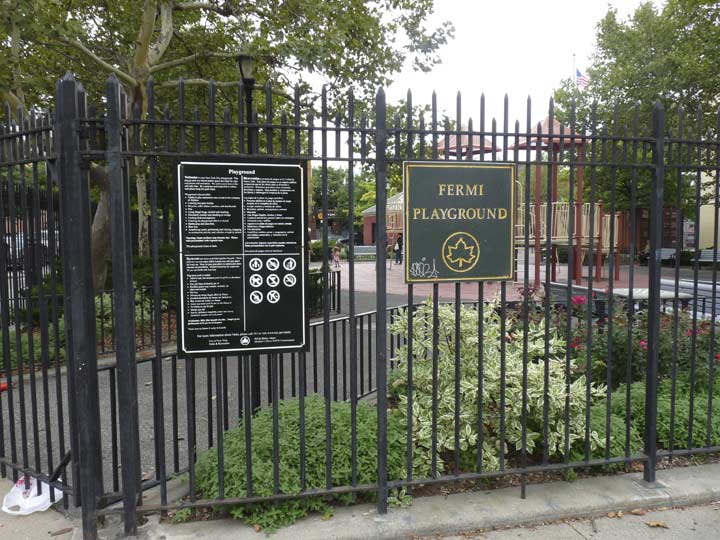
Across Starr Street is the Fermi Playground, named for the great Italian physicist Enrico Fermi (1901-1954) who discovered the neutrino and helped develop the atomic bomb as part of the Manhattan Project. The adjoining intermediate (junior high) school was named for Fermi and later, the park took his name.
History of science and technology has consistently taught us that scientific advances in basic understanding have sooner or later led to technical and industrial applications that have revolutionized our way of life. It seems to me improbable that this effort to get at the structure of matter should be an exception to this rule. What is less certain, and what we all fervently hope, is that man will soon grow sufficiently adult to make good use of the powers that he acquires over nature. — Enrico Fermi
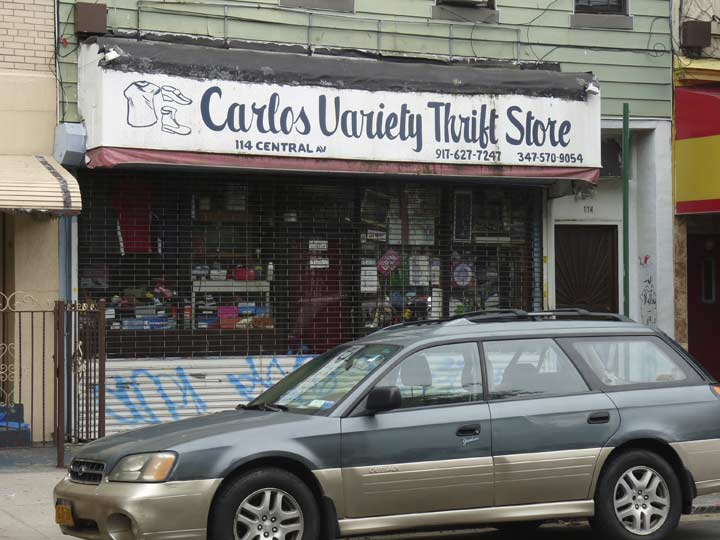
At #114 is the Carlos Variety Thrift Store, whose sidewalk sign has not yet been ironically preserved by a gentrifier.
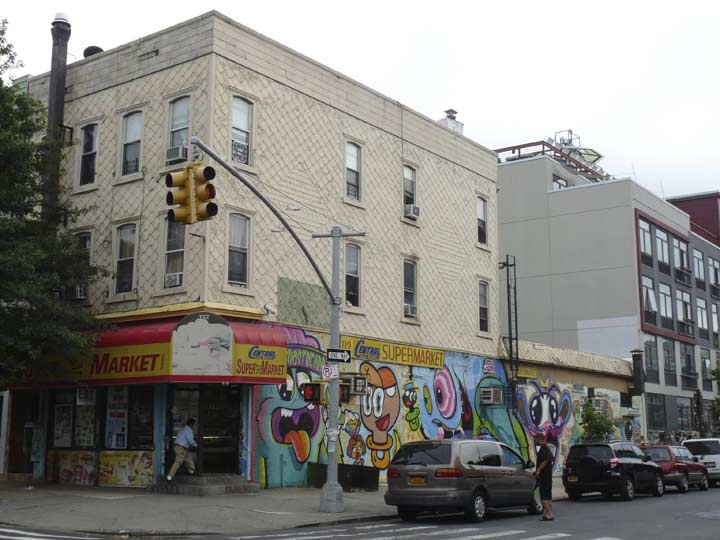
Next door on the corner of Troutman is the Central Supermarket, with the typical bodega red and yellow trim. For some reason Street View is spotty here. The block of Troutman south of here showed some very old buildings in 2007, but for all I know, they’re gone by now. Someone help me out and take a stroll down there and find out for me.
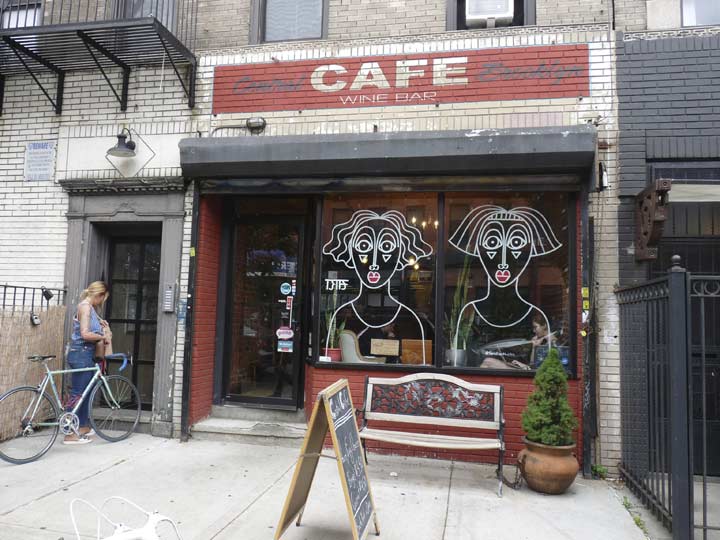
Yet another eatery for the gentrified crowd, Central Cafe at #108. The painted (chalked) sign says “wine bar” but it’s actually a real cafe that serves drinks. I’ll give it a couple of points for its exposed brick wall interior.
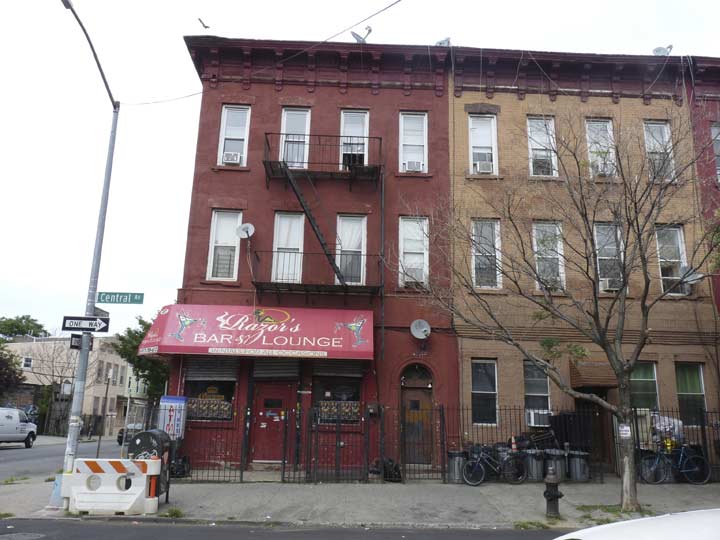
A reminder of the good old days at Central and Jefferson Street, Razor’s Bar and Lounge.
An explosion of street art on the SW corner of Jefferson. Remember, things can change every few months. In the summer of 2017, Muppets characters were the theme. This is a few blocks away from the more famed Bushwick Collective at Troutman and St. Nicholas Avenues.
An interesting lamppost (to me at least) is on the same corner. In the 1980s and 1990s, the Department of Transportation strayed away from octagonal-shafted poles and experimented with cylindrical poles, and in some cases, stainless steel ones. Most of the stainless steel posts were installed on parkways and expressways but a few like this one made it to local streets. The manufacturer (P&K) and date of installation can be found on the base. When the 2000s rolled around, the DOT reverted to traditional octagonal shafts.

Finally, on this corner, whoever painted the “Self Salon” sign did a passable imitation of the Futura font, that gets the gist of it but not quite.
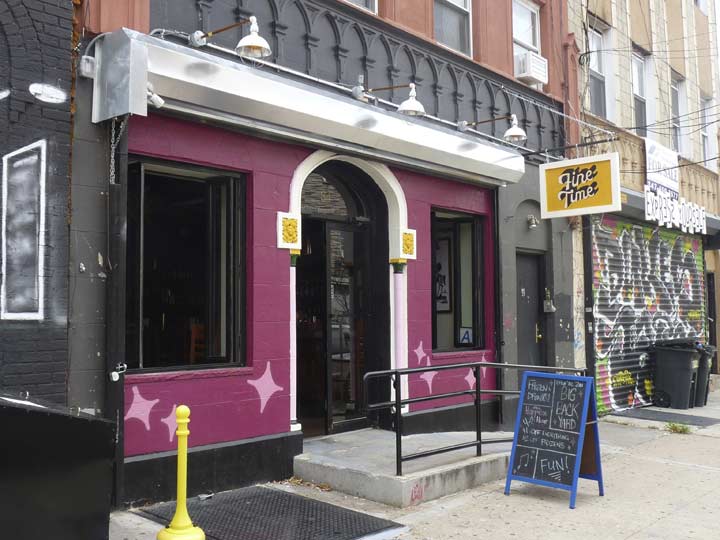
Like the ancient dive Rudy’s in Hell’s Kitchen, Fine Time Bar, #84 Central Avenue, offers a free hot dog with a drink purchase. That kind of diet propelled Babe Ruth to the home run record.
Henry’s, a liquor store at #69 Central at Melrose, has atypical liquor store signage; while many liquorterias around town just display the word LIQUOR in large neon letters, Henry’s uses a subtle backlit stencil sign.
The building at the corner of Central and Melrose is currently abandoned and vacant. Street markers have gone to town on the bottom floor, possibly using Lowbrow Artique products, and have cleverly extended the art on the sidewalk to curl around the ancient fire alarm.
It’s now used as a church, but this grand old brickfaced factory at Central Avenue and George Street ince turned out burlap bags, as can be seen faintly on its facade.
#93 Forrest Street off Central is home to a motorrycle repair shop and also an event venue. The exterior has some engaging artwork.

I found an International Scout jeep vehicle, probably built in the 1950s 1961, parked outside.
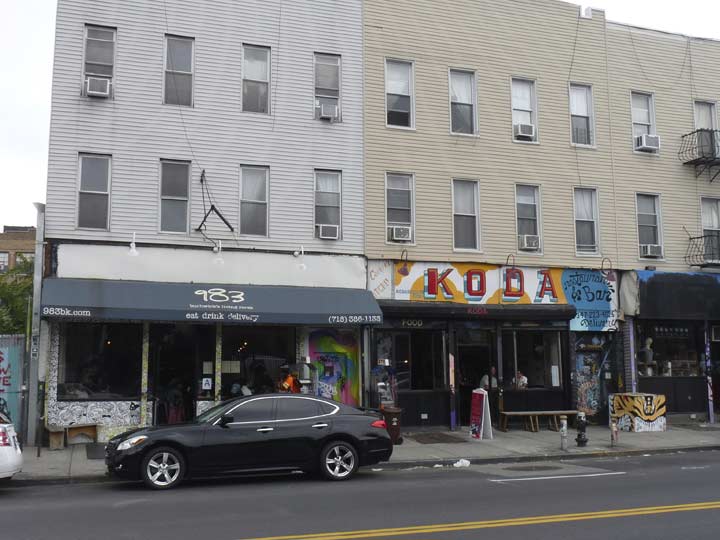
Central Avenue begins at Flushing Avenue. Side by side are a pair of restaurants and bars, 983 (“Bushwick’s Living Room”) and Koda. The buildings are quite old, but their age is hidden by aluminum siding.

The age of this venerable structure at the SW corner of Flushing and Central is on display. The sports bar that had been on the ground floor is out of business.
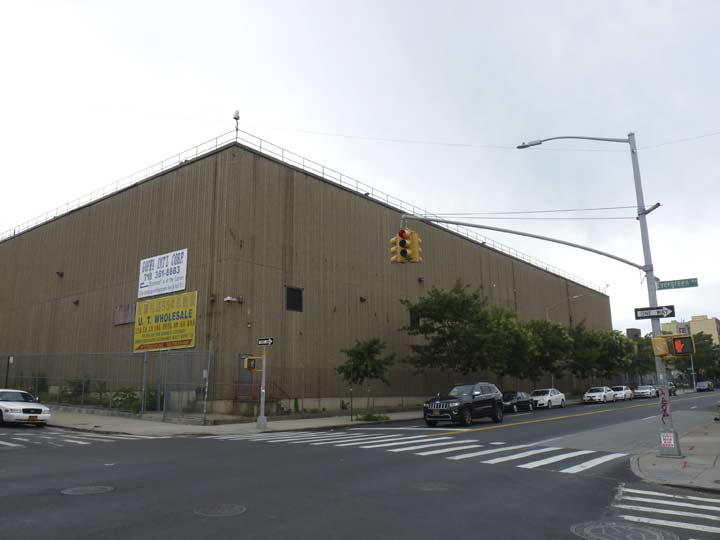
Basic Building. This quite large, featureless, one story structure on Flushing and Evergreen Avenues hosts shipping and warehousing.
While most of Bushwick’s north-south avenues begin at Flushing Avenue, Evergreen Avenue begins a block north, at Cook Street. I was interested in this short piece because it retains its old Belgian block paving. The avenue is named for Evergreens Cemetery at the south end of Bushwick, and a small section of Bushwick was once called Evergreen.
Much of East Williamsburg, though rapidly becoming gentrified and residential, is still devoted to manufacturing and importing. Here is a loft building home to an importer, and a manufacturing shed with an old hand painted sign.
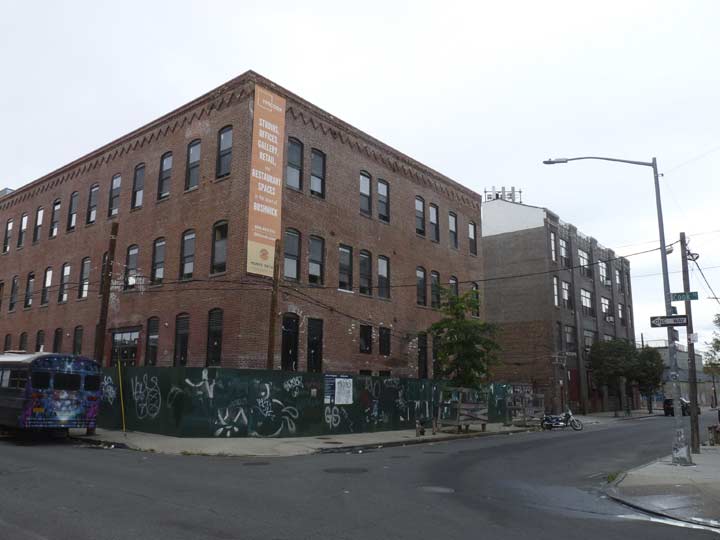
This classic brick factory building at Cook and White Streets was being converted to living spaces in the summer of 2017.
Art at Cook and Moore Streets.
there’s a gourmet pizzeria, outdoor picnic tables, and, surprisingly a radio station where I was interviewed by Mike Edison and Judy McGuire on their Arts & Seizures show on Sunday, July 17, 2011. Can so much time have passed since then? Sick transit, Gloria! Here’s my show.
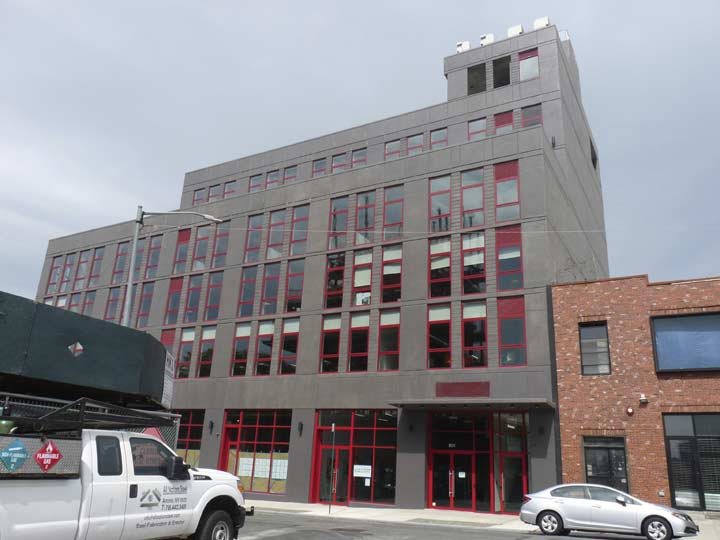
A new building on Bogart and Ingraham, 100 Bogart, proclaims on their website that they are “a new building in Bushwick, Brooklyn that provides modern workspaces for artists, entrepreneurs and freelancers.” Can that pay the bills?
To see how much East Williamsburg is changing, have a look at the same spot on Street View from a couple of years ago.
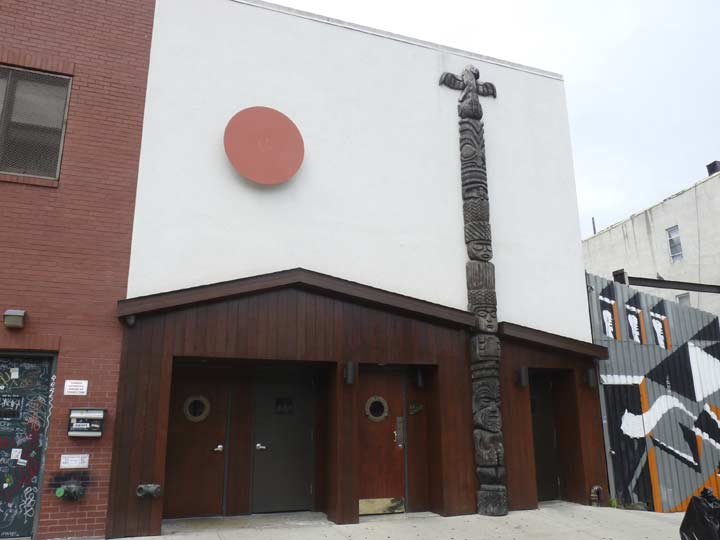
El Cortez, 17 Ingraham Street, is a Tex Mex restaurant that has a totem motif on its exterior.
The L train entrance at Morgan Avenue and Harrison Place is a bit hard to find, but L train service will be much harder to find beginning in 2019. If I’m around here then, I’ll need to take a couple of buses to get outta here…
Check out the ForgottenBook, take a look at the gift shop, and as always, “comment…as you see fit.”
3/26/18

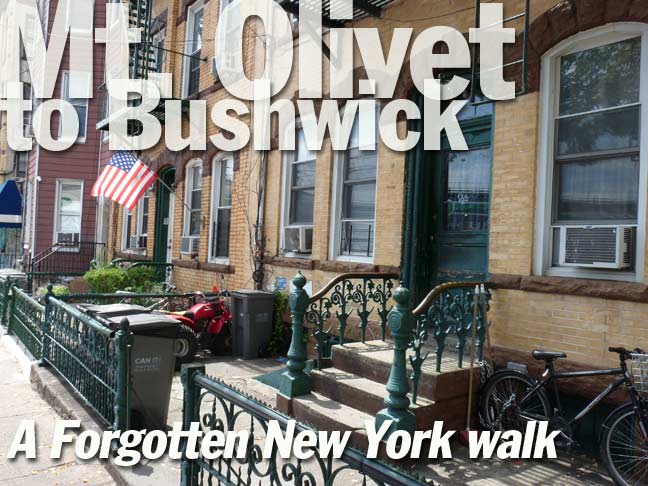
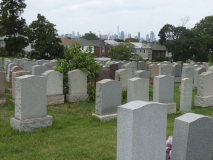
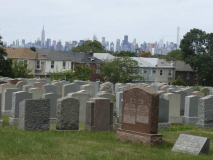
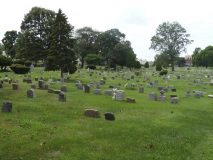
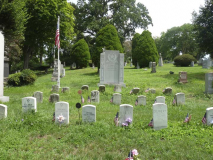
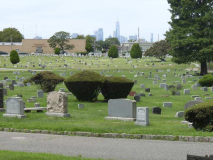
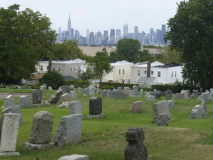
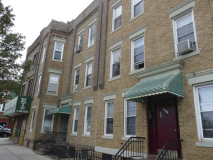
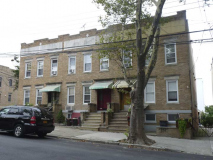
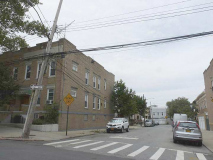
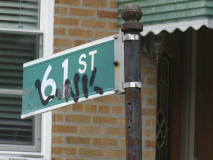
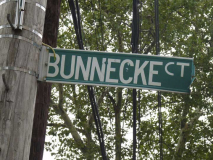

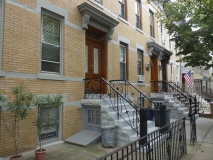
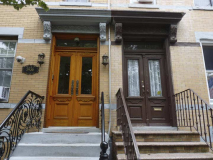
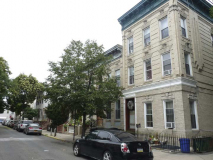
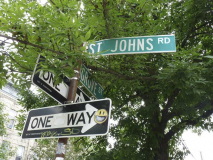
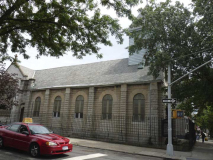


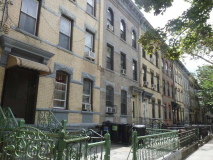
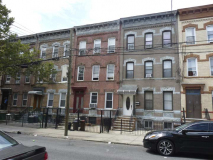
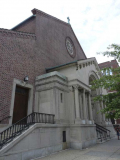

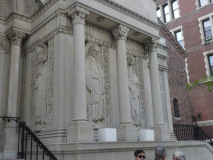

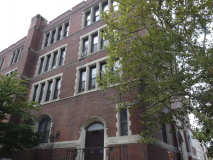
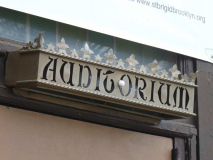
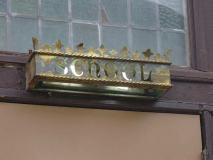
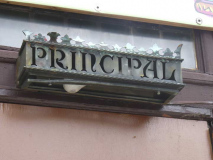

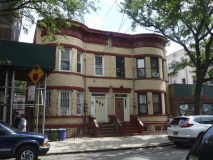
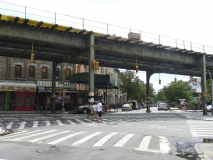
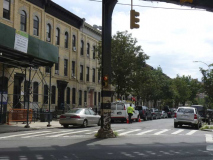
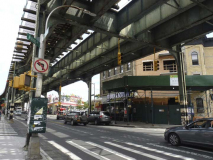
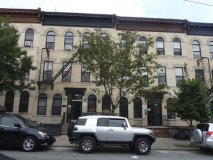
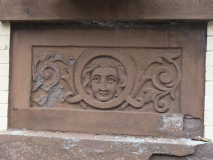
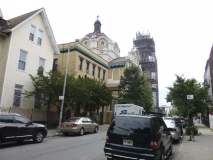
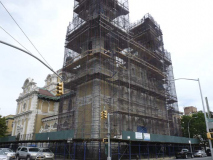
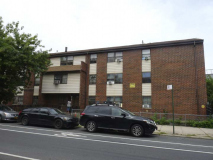
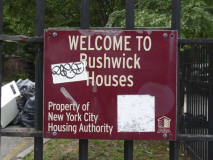
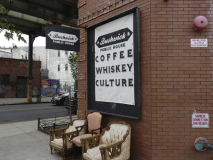
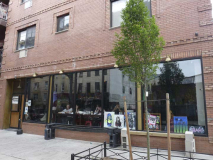
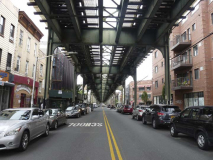

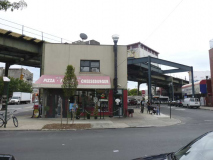
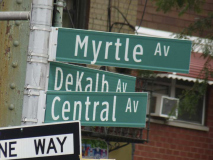
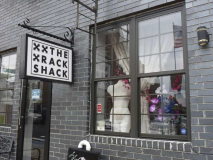
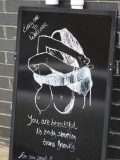
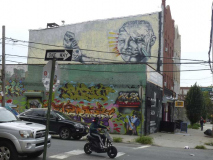
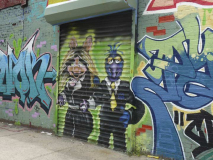
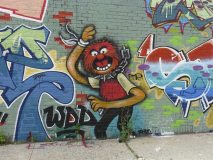

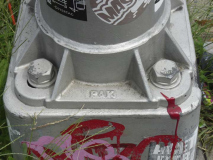
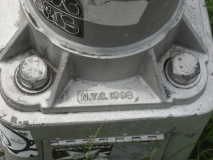
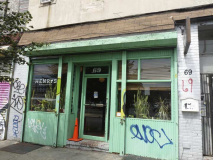
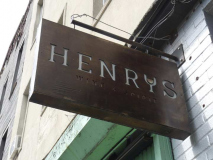
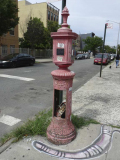
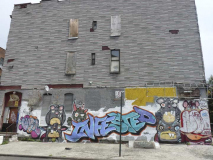
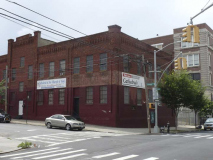

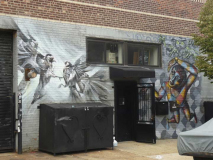

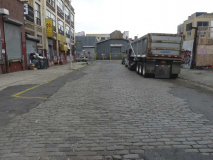
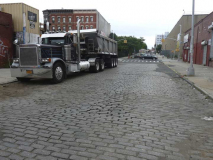
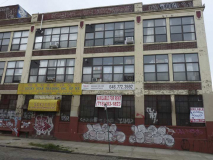
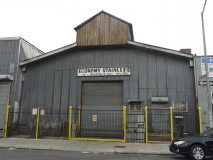
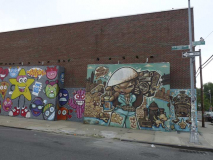
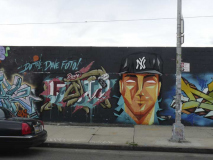
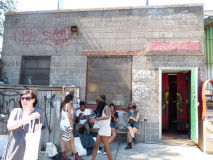
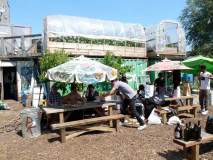
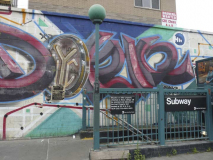
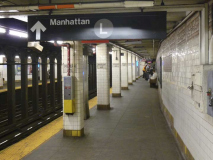
10 comments
1. I’m surprised you forgot to mention the opening credits of “King Of Queens”:
https://www.bing.com/videos/search?q=king+of+queens+openig+credits&view=detail&mid=EE6DD35F09F77F05E5B7EE6DD35F09F77F05E5B7&FORM=VIRE
2. The International Harvester Scout was produced 1961-80 (not the ’50’s). It was one of the first 4×4’s. It was a Jeep rival but not a Jeep. Call it a sport utility.
https://en.wikipedia.org/wiki/International_Harvester_Scout
Tex/Mex + Totem pole?
No, just no.
loved seeing this was born in brooklyn lived at 195 grove street form the time I was born still I turned 18, Last time I was there There were town houses and where my house was is now a siting area. I guess you cannot go home.
It’s actually >sic< transit gloria, but I like your variation. 😀
I agrees with you 100% about the Brick Row Houses. Especially when they are unaltered from the architects original design. They have this wonderful Democratic feel in line with “a chicken in every pot and a car in every garage”-each person his own little utopia.
By the way I love your photos of churches. Being a religious person it’s nice to see the variety of places where people and gather together and commune with God.
Oh,check out that guy,the shoe repair.
You go in there”Hey,are my shoes ready yet?”
And he goes”Oh yeah,pery thoon,pery thoon”
So you go back the next day and he gives you the same spiel.
The ol’ run around,as usual.
Only in Brooklyn. In the first pic you can see an old three wheeled Honda ATV. Outlawed in 1988 it is rare to see a three wheeler any more. Can anyone explain what that might be for?
As always great work Kevin
Original members of the Hallet family are buried in Mt. Olivet. or at least the headstones are. Almost all of them predate the 1850 founding date of the cemetery and were probably moved in 1906, when a memorial was set on Central Ave near the top of the cemetery’s hill.
Great page! I was born in 1968 and lived in Bushwick until 1998. I’ve been associated with St. Barbara’s Church since my baptism at one month “old”. I remember that when we drove along Evergreen Ave, my dad always turned onto Flushing Ave, making me think that the pictured Economy Stainless Supply building that was straight ahead was literally the end of the road – nothing else on the planet past that building!
This was a great read with wonderful photos. Thanks for putting it together. I left NY about 20 years ago aand sadly, never got to see Queens in depth like this. Fascinating.